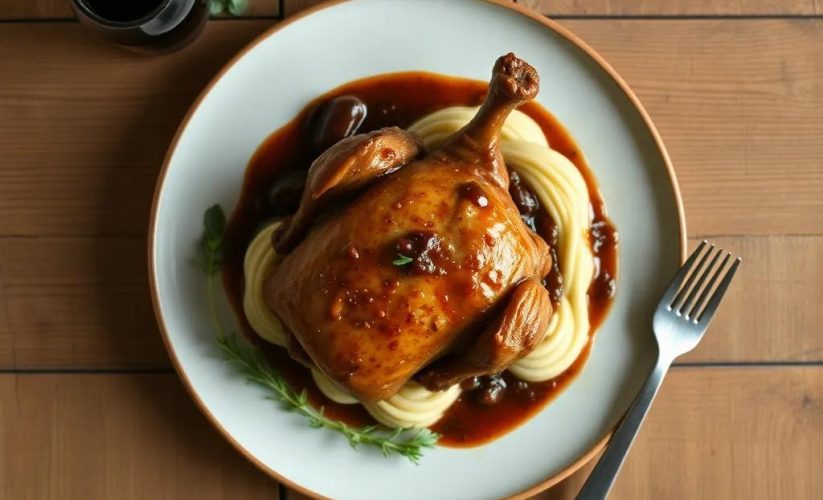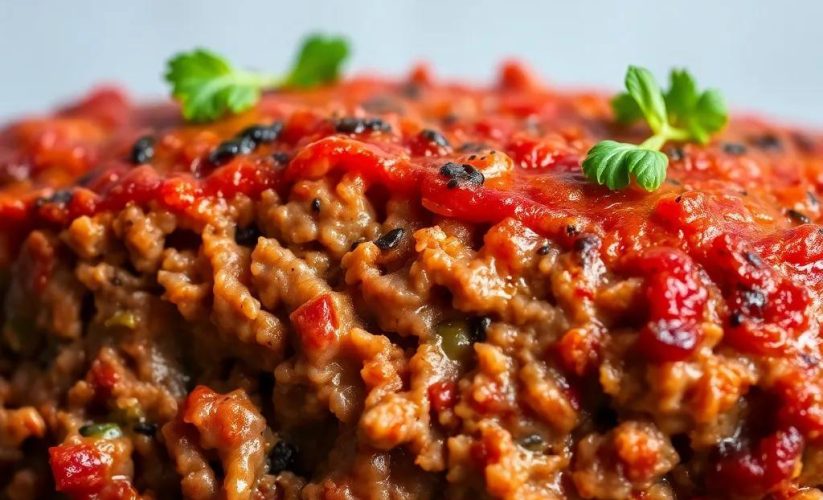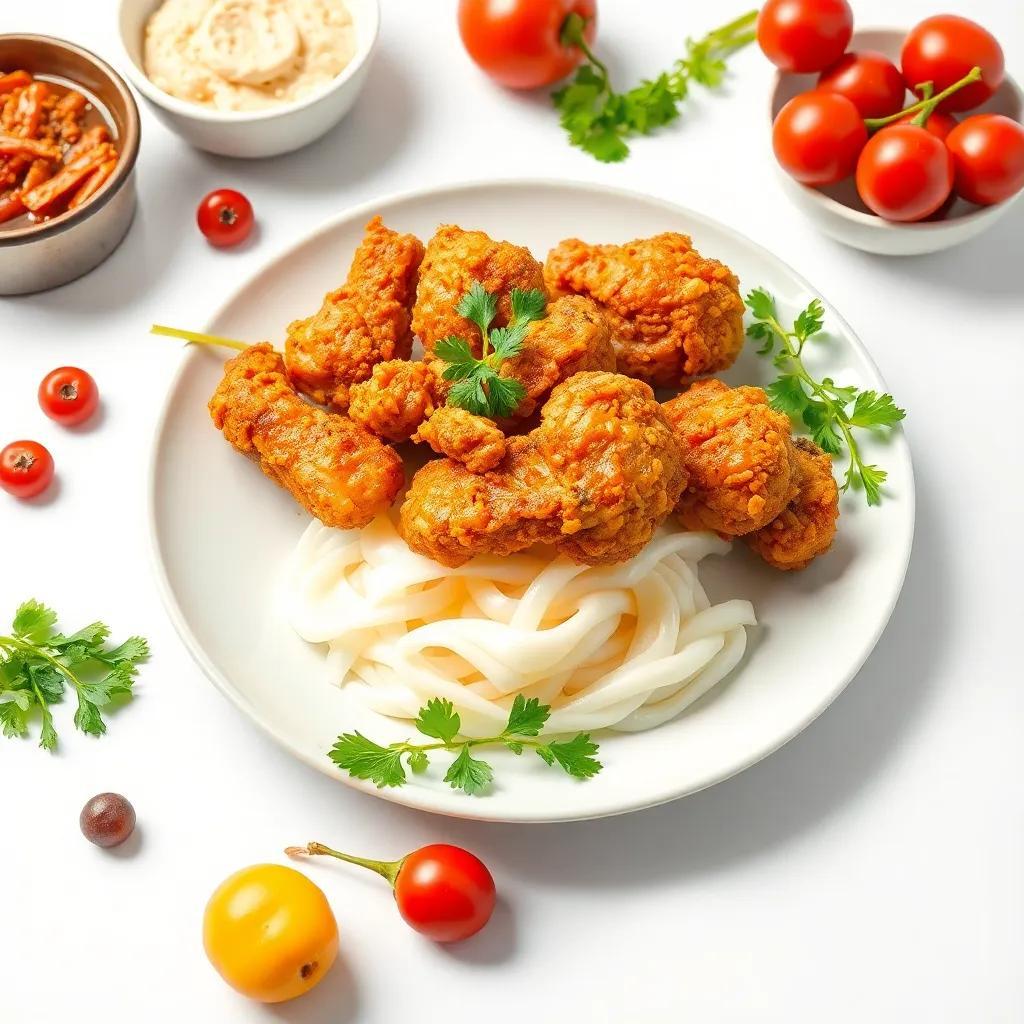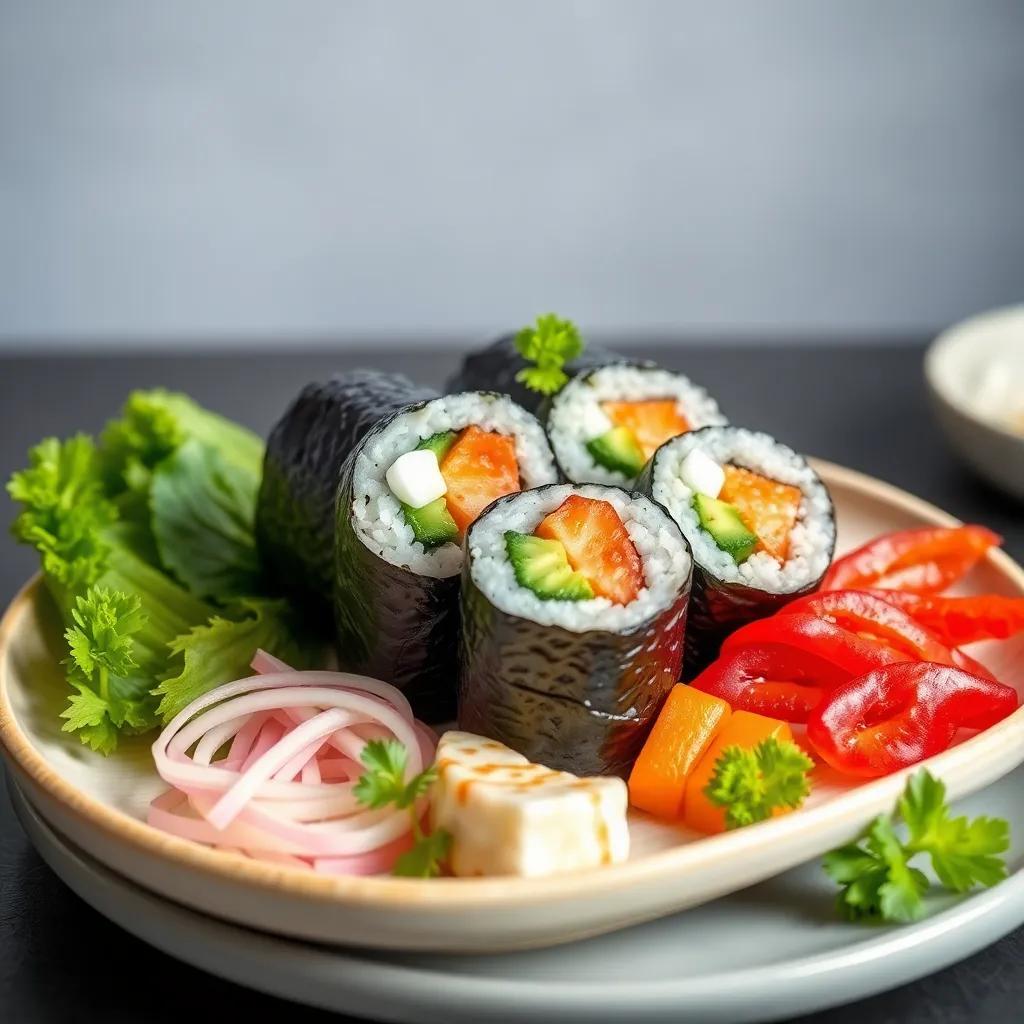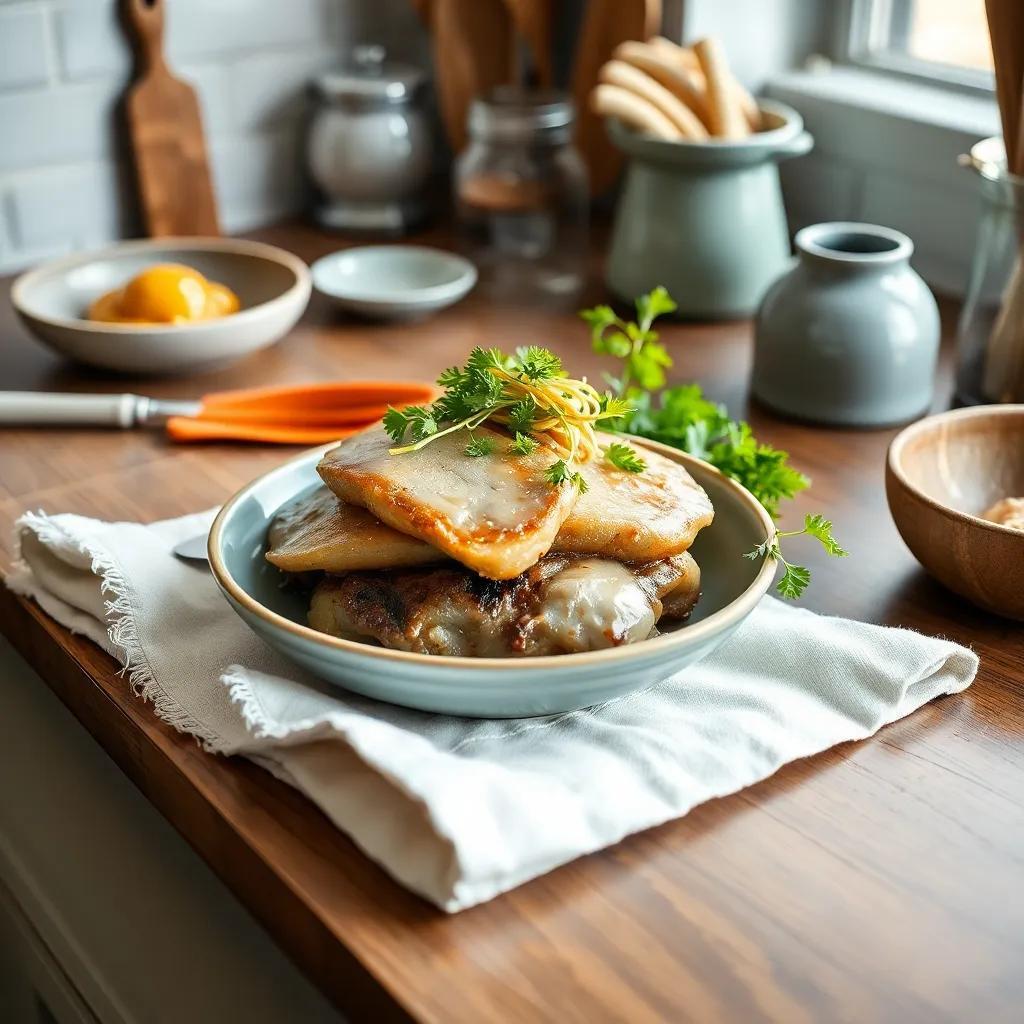Spicy Tteokbokki Recipe: Easy, Kid-Friendly Korean Street Food Delight
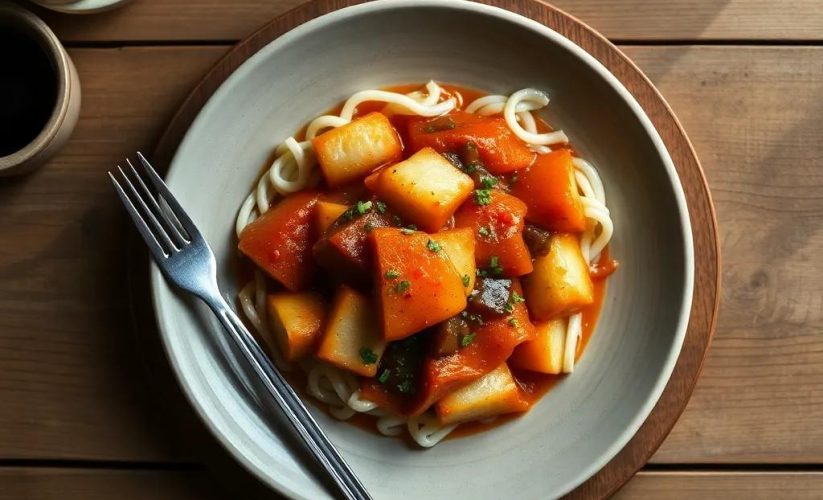
Spicy Tteokbokki Recipe: Easy, Kid-Friendly Korean Street Food Delight
🌍 Cuisine: Korean
⚙️ Difficulty: Easy
Ingredients
Nutrition Facts
350 kcal
Instructions
- Soak the rice cakes in warm water for 10 minutes if they are hard or refrigerated, then drain.
- In a large pan or wok, bring 2 cups of water or anchovy broth to a boil over medium heat.
- Add the gochujang, gochugaru (if using), soy sauce, sugar, and minced garlic to the boiling water. Stir well to combine.
- Reduce heat to medium-low and add the soaked rice cakes to the sauce mixture.
- Cook the rice cakes for about 8–10 minutes, stirring occasionally, until they become soft and chewy.
- Add the sliced fish cakes and green onions to the pan. Continue to cook for another 3–5 minutes so the sauce thickens slightly.
- If using, add hard-boiled eggs to warm through during the last few minutes of cooking.
- Drizzle sesame oil over the tteokbokki and stir to incorporate.
- Turn off the heat and sprinkle toasted sesame seeds on top for garnish.
- Serve hot and enjoy your kid-friendly, spicy Korean street food!
Serving Suggestions
- Serve with a side of steamed white rice to balance the spiciness.
- Pair with Korean fried chicken for a complete street food experience.
- Top with sliced boiled eggs to add protein and mild flavor.
- Offer pickled radish (danmuji) for a crunchy, refreshing contrast.
- Garnish with chopped fresh green onions for extra color and aroma.
- Serve with a cold glass of milk or yogurt drink to help tame the heat for kids.
- Add mozzarella cheese on top and melt it for a cheesy twist on classic tteokbokki.
Table of Contents
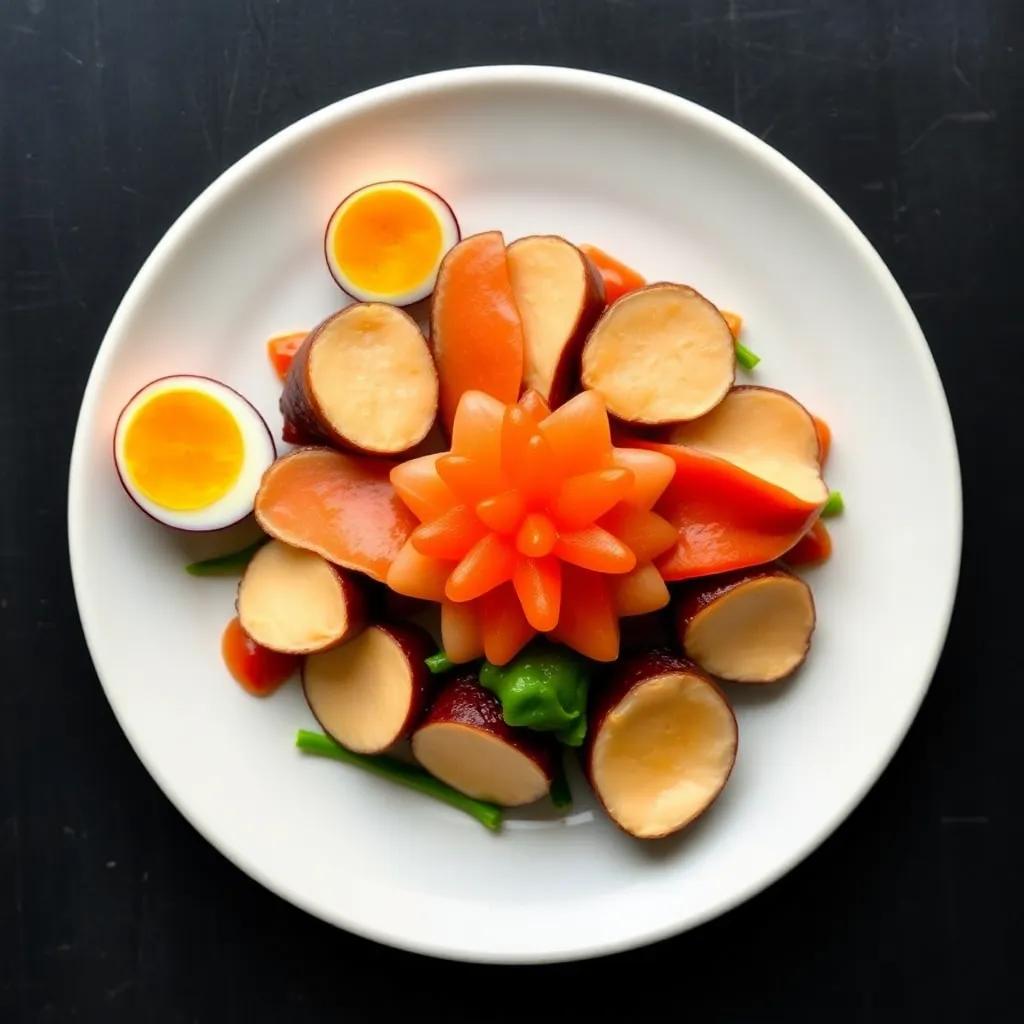
Intro
Tteokbokki is one of those magical dishes that instantly brings people together — equal parts cozy, comforting, and exciting. This spicy Korean street food delight is beloved not only for its bold flavors but also for its chewy, satisfying texture that kids and adults alike find fun to eat. What makes this version truly special is how approachable it is: a handful of simple steps turn everyday ingredients into a vibrant, mouthwatering meal that’s perfect for any casual gathering or quick snack time.
Whether you’re craving something to jazz up an afternoon get-together, searching for a kid-friendly duction to Korean cuisine, or just looking for a new, easy-to-make dish that packs a flavorful punch, this recipe fits the bill. It’s a fantastic choice if you want something that feels both familiar and exciting without hours of prep or exotic shopping trips. Plus, the harmonious blend of sweet, spicy, and savory notes makes it a crowd-pleaser that’s just as fun to make as it is to eat.
Ideal for sharing at family dinners, weekend hangouts, or even a cozy movie night, this version of tteokbokki balances spice with subtle sweetness, ensuring it doesn’t overwhelm younger palates while still delivering that addictive kick of heat. Embrace the joy of this beloved Korean classic, where every bite reveals the heartiness of soft rice cakes coated in a glossy, flavorful sauce — a true street food treasure brought to your home kitchen with ease and comfort.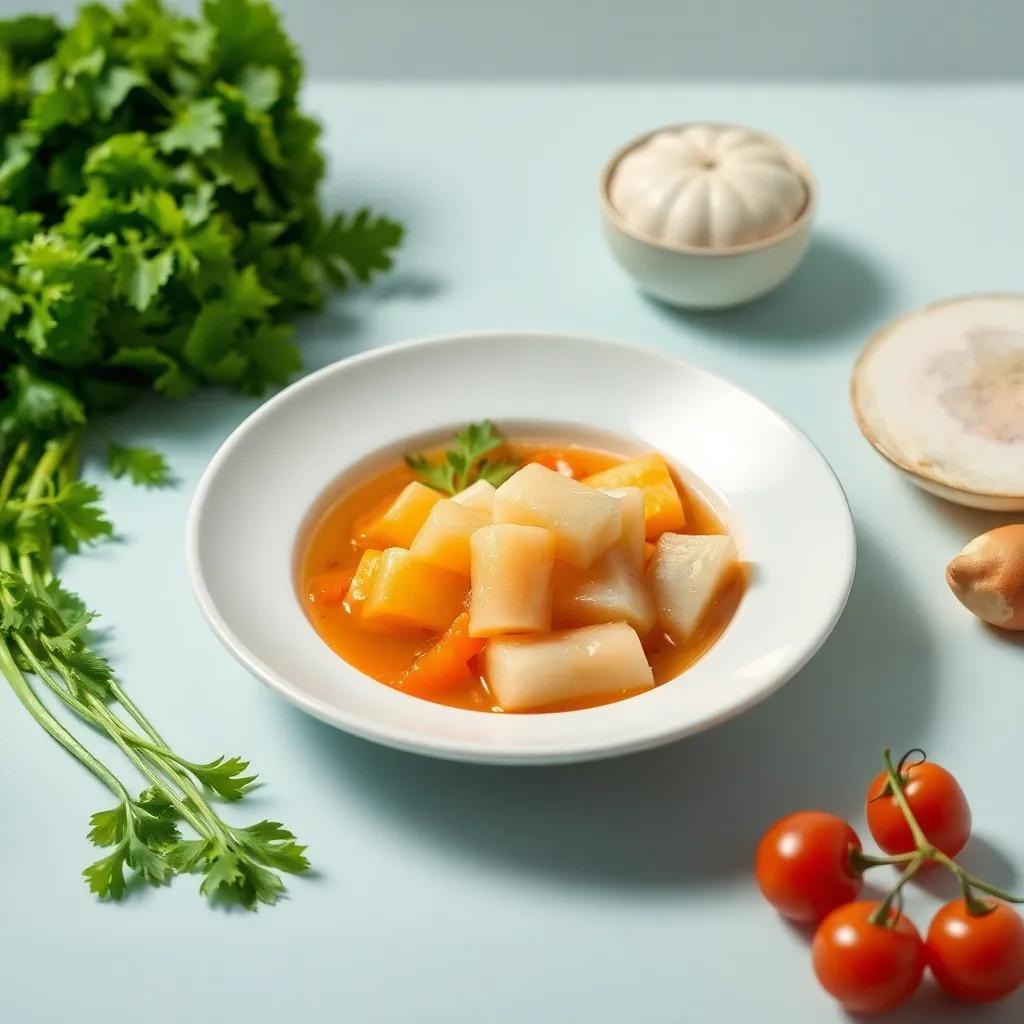
Ingredient Notes
When diving into tteokbokki, a handful of key ingredients truly define its character and elevate the dish beyond ordinary. Understanding their roles not only helps you appreciate the recipe but also guides you in finding the best quality or suitable alternatives.
Korean Rice Cakes (Tteok):
These chewy, tube-shaped rice cakes are the heart of tteokbokki. Made from glutinous rice flour, their unique texture is what makes the dish so satisfying—a perfect balance between tender and springy. When buying, look for fresh or refrigerated rice cakes at Asian markets or specialty stores; if you only find frozen ones, soaking them in warm water beforehand will soften them nicely. If you’re unable to source Korean-style tteok, you might try substituting with cylindrical cylindrical Japanese mochi or even gnocchi in a pinch, though the texture will differ.
Gochujang (Korean Red Chili Paste):
This vibrant, fermented chili paste brings not only heat but an essential depth of umami and subtle sweetness that defines tteokbokki’s signature sauce. When selecting gochujang, opt for reputable brands with a natural fermentation process for the best flavor. The paste’s spice level can vary, so adjust quantities to your taste or your kid’s tolerance. If you cannot find gochujang, blending miso paste with a bit of chili powder and a touch of honey can mimic some of its rich complexity, though the authentic tang is hard to replicate entirely.
Gochugaru (Korean Red Chili Flakes):
While optional, gochugaru adds a beautiful smoky heat and slightly grainy texture to the sauce, deepening the chili profile without overwhelming spiciness. These flakes are typically milder and fruitier than standard chili flakes, so they contribute a nuanced warmth. Keep in mind that quality varies; Korean gochugaru is often bright red and finely ground. If unavailable, mild smoked paprika or crushed red pepper flakes can be used, but start with a small amount to avoid overpowering the dish.
Fish Cakes (Eomuk):
Sliced fish cakes are a popular addition offering mild seafood flavor, a pleasing bite, and umami richness that balances the spicy sauce. In Korean cuisine, these are usually processed fish paste shaped into flat rectangular slices or tubes and are widely available frozen or refrigerated at Asian grocery stores. If you’d prefer a vegetarian option, firm tofu or sautéed mushrooms can provide similar texture and a savory note.
By paying attention to these core ingredients, you ensure your tteokbokki captures the authentic taste and texture that make it a beloved Korean street food. Plus, knowing how to select or substitute them can make the recipe approachable no matter where you shop!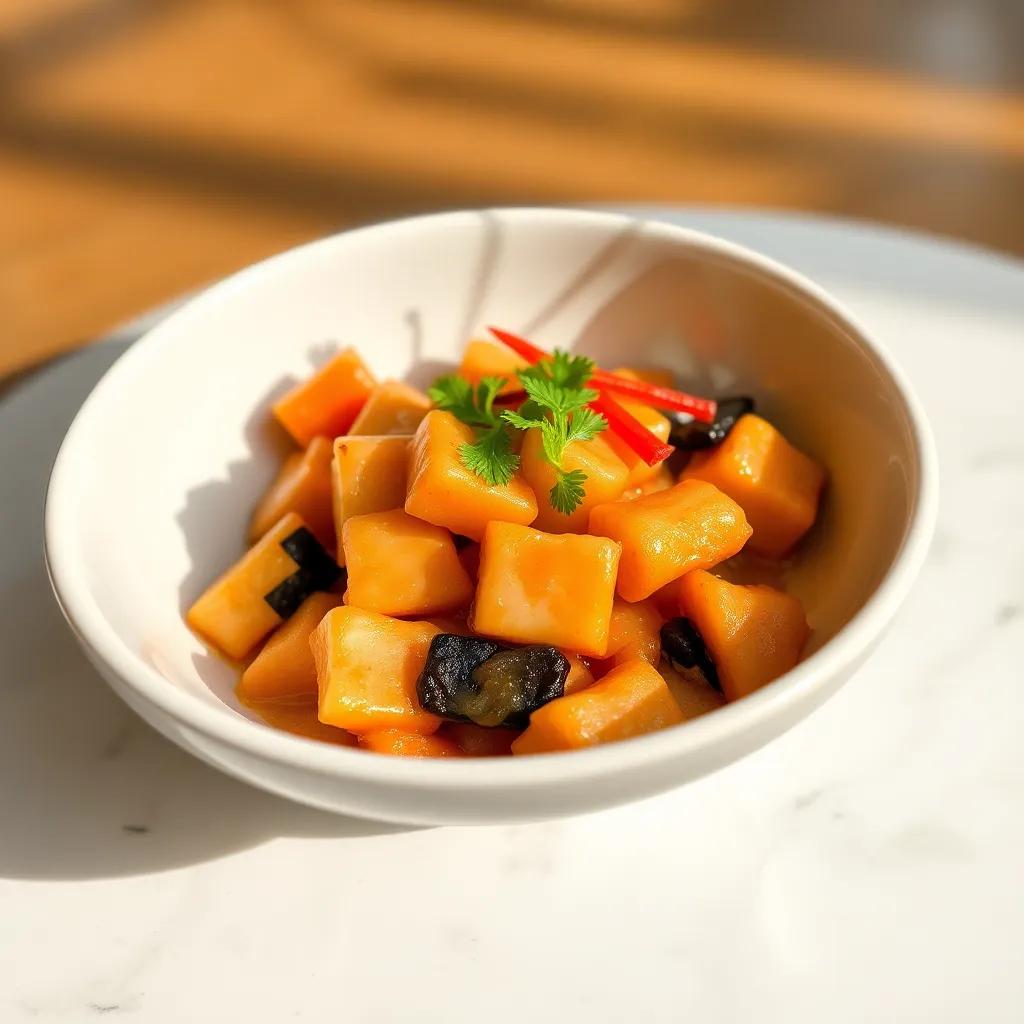
Tips & Variations
To elevate your tteokbokki experience and tailor it to your family’s tastes or dietary needs, here are some expert tips and creative variations to inspire your next cooking session:
- Control the Spice Level: Since this recipe is designed to be kid-friendly, feel free to adjust the amount of gochujang and gochugaru. Start with less and gradually add more to customize the heat. For a milder sauce, you can even mix in a spoonful of sweet chili sauce or a dash of honey to balance the spice without compromising on flavor.
- Broth Base Swaps: Anchovy broth is traditional and imparts a subtle umami depth, but vegetable broth or even simple water works well too. For a richer, heartier version, try using chicken broth or adding a small piece of dried kelp (dashima) during simmering, removing it before serving.
- Protein Boosts and Alternatives: Beyond classic fish cakes and boiled eggs, you can add cooked chicken, shrimp, or even beef slices for extra protein. For a vegan twist, swap fish cakes and eggs with sautéed mushrooms, pan-fried tofu cubes, or tempeh — these absorb the sauce beautifully and add satisfying texture.
- Cheesy Comfort: Don’t shy away from adding shredded mozzarella or cheddar cheese on top during the last minute of cooking. Melted cheese creates a creamy, mellow contrast to the spicy sauce and is often a hit with kids.
- Vegetable Variations: Enhance both nutrition and color by tossing in sliced cabbage, carrots, bell peppers, or zucchini. Add these early enough to soften but keep some crunch, making the dish more vibrant and balanced.
- Gluten-Free Adjustments: Traditional soy sauce contains wheat, so switch to gluten-free tamari or coconut aminos to keep the sauce safe for gluten-sensitive eaters without sacrificing savory depth.
- Sauce Texture Tips: If your sauce becomes too thick or sticky, thin it out with a splash of water or broth. Conversely, to intensify flavor and coat the rice cakes better, allow the sauce to simmer a little longer on low heat, stirring gently to avoid sticking.
- Rice Cake Alternatives: If Korean rice cakes aren’t available, Japanese mochi or Italian gnocchi can fill in, though textures vary slightly. For a healthier twist, try using spiralized vegetables like zucchini noodles alongside or instead of rice cakes for a lighter bite.
- Make it a One-Pot Meal: Add noodles such as instant ramen or glass noodles in the last few minutes of cooking for a more filling, comforting street-food-style bowl that kids will love slurping.
By exploring these tips and variations, you can keep tteokbokki exciting and suited to any occasion, whether it’s a quick weekday snack, a family-friendly dinner, or an adventurous introduction to Korean cuisine. The key is to balance flavors and textures so everyone at the table enjoys this spicy, satisfying dish in their own way.
Leftovers & Storage
Leftover tteokbokki can be just as enjoyable as when freshly made, with a few simple storage and reheating tips to keep its signature chewy texture and bold flavors intact. Because the rice cakes tend to absorb sauce and can harden or clump if stored improperly, handling leftovers with care is key.
To store your remaining tteokbokki, allow it to cool to room temperature first, then transfer it into an airtight container. Glass or BPA-free plastic containers with tight-fitting lids work best to minimize moisture loss and prevent odors from other fridge foods from seeping in. Be sure to include some of the thick sauce to keep the rice cakes moist and flavorful; if the sauce has thickened considerably, you might stir in a splash of water or broth before sealing.
Refrigerated leftovers will stay fresh for up to 2 to 3 days. When reheating, gentle warming is best to avoid drying out the rice cakes. You can reheat tteokbokki in a skillet over low heat, adding a tablespoon or two of water or broth to loosen the sauce and prevent sticking. Stir frequently until heated through and the sauce regains its glossy consistency. Alternatively, microwaving covered for 1–2 minutes with a small amount of water works well—just stir midway to ensure even heating.
If you want to save tteokbokki for longer, it freezes reasonably well but may lose some of its soft, chewy texture upon thawing. To freeze, place cooled portions in a freezer-safe container or heavy-duty resealable bag, removing as much air as possible. Label with the date and consume within 1 month for optimal taste. Thaw overnight in the fridge before reheating gently on the stove as described above. Avoid reheating from frozen to prevent uneven warming and tougher texture.
For meal prepping or packed lunches, consider storing the rice cakes and sauce separately and combining them before reheating to ensure freshness. Hard-boiled eggs, if included, should be kept separate and added fresh for best texture. Additionally, garnishes like sesame seeds and green onions are best sprinkled on just before serving.
In summary, the key to storing and enjoying leftover tteokbokki is maintaining moisture and reheating gently. With these tips, you’ll extend the life of your spicy Korean street food delight without sacrificing the fun, chewy bite and rich, savory sauce that make it so irresistible.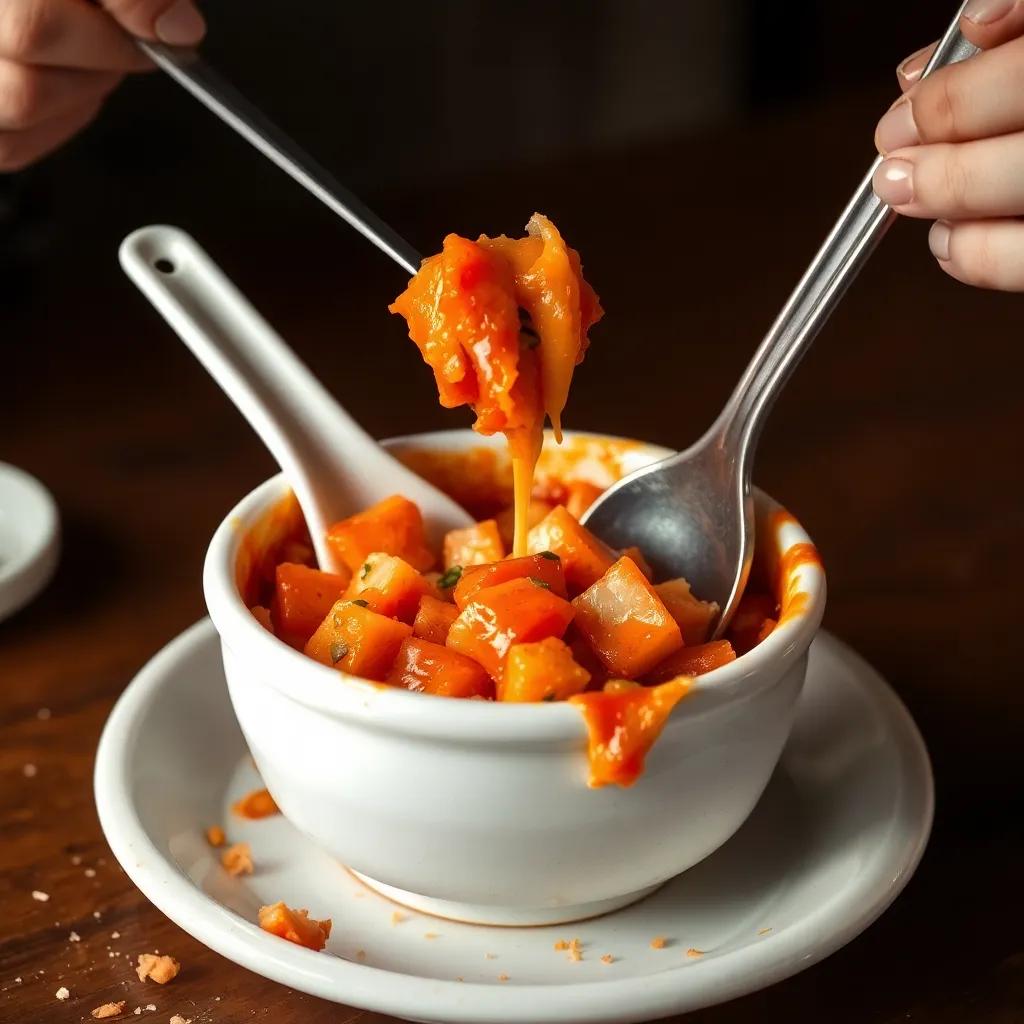
Behind the Recipe
Tteokbokki is much more than just a spicy snack—it’s a vibrant symbol of Korean street food culture and a beloved comfort food that carries a rich history. Originating from humble market stalls and street vendors, it emerged as an affordable, quick bite that delighted locals across all ages. The chewy rice cakes, simmered in a bold, sweet-and-spicy sauce, quickly became a staple for sharing and socializing, embodying the essence of communal eating that defines much of Korean food culture.
This recipe pays homage to tteokbokki’s roots while adapting it with a milder spice level and familiar ingredients to make it approachable for kids and those new to Korean flavors. The balance of heat and sweetness reflects the evolving taste preferences that have helped this dish transition from street carts to family kitchens and even international menus. The addition of fish cakes and boiled eggs, common in many Korean households, further grounds this version in tradition while offering texture and satisfying protein.
For many, tteokbokki isn’t just about the food—it’s about memories. It’s the snack you grab on a chilly evening after school, the shared plate passed around during festive gatherings, or the warm comfort food enjoyed with friends late into the night. Bringing this recipe into your home connects you to those moments of joy and togetherness, inviting a taste of Korea’s lively street scenes and the simple pleasures of tasty, comforting food.
In crafting this kid-friendly adaptation, the goal was to preserve tteokbokki’s signature charm—the addictive chew of the rice cakes and the rich, layered sauce—while ensuring it’s enjoyable for younger taste buds without losing the essence that makes it so iconic. Whether you’re introducing this dish to curious little ones or simply seeking a quick and flavorful snack that’s steeped in culture, this recipe serves as a delicious bridge between tradition and everyday family dining.
FAQ
Can I make this recipe less spicy for kids?
What can I use if I don’t have rice cakes (tteok)?
How do I store and reheat leftover Tteokbokki?
Can I freeze Tteokbokki for later?
Is there a vegetarian or vegan version of this recipe?
Can I add protein like chicken or tofu to make it more filling?
What are some fun toppings or sides to serve with Tteokbokki?
Try It Yourself
There’s something truly magical about this spicy tteokbokki recipe—it’s simple to make, delightfully kid-friendly, and bursting with those bold, comforting flavors that make Korean street food so irresistible. Whether you’re new to Korean cuisine or a longtime fan, this dish promises to bring a little heat and a lot of happiness to your table.
Give it a try, and don’t be shy—share your thoughts, rate the recipe, or tell us about your own creative spin on it in the comments below. We’d love to hear how this tasty treat fits into your family’s favorites!

